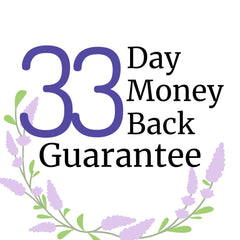Por muy diminutos que sean los ácaros, pueden tener un gran impacto en la salud. Esto es especialmente cierto si usted o algún miembro de su hogar padece alergias. La conexión entre los ácaros y las alergias está bien documentada, y los ácaros se encuentran entre los alérgenos de interior más comunes.
Por eso es importante comprender cómo los ácaros contribuyen a las reacciones alérgicas y Gestionar su presencia en su hogar Puede mejorar considerablemente su calidad de vida. Hoy exploraremos la conexión entre los ácaros y las alergias, analizaremos algunos síntomas a los que debe prestar atención y le ofreceremos algunas estrategias para ayudarle a reducir su exposición a los ácaros.
El papel de los ácaros en las alergias
ácaros del polvo, También conocido como Los ácaros de la cama son la fuente más común de alérgenos en interiores. Estos arácnidos microscópicos prosperan en ambientes cálidos y húmedos y se alimentan de las células cutáneas muertas que desprenden los humanos y las mascotas. Los ácaros del polvo... ellos mismos No son dañinos, pero las proteínas en sus excrementos y partes del cuerpo son alérgenos fuertes.
Cuando esas partículas quedan suspendidas en el aire, son muy fáciles de inhalar., entonces cualquier Las personas sensibles pueden tener reacciones alérgicas. Los ácaros del polvo se encuentran comúnmente en la ropa de cama, alfombras, muebles tapizados y cortinas. Allí donde se acumulan polvo y células cutáneas, allí estarán.
Ahora bien, los ácaros del polvo no son el único tipo de ácaros vinculados a las alergias. También existen los ácaros del almacenamiento, que se encuentran comúnmente en productos alimenticios como la harina, los cereales y los frutos secos. También pueden provocar reacciones alérgicas, sobre todo si se tienen problemas respiratorios. ácaros Y los ácaros del trébol también contribuyen a los niveles de alérgenos en interiores porque pueden causar irritación de la piel.
3 tipos de síntomas de alergia causados por ácaros
¿Cómo puedes saber si tus alergias son causadas por ácaros? Bueno, hay algunos síntomas a considerar:
- Síntomas respiratorios
Los estornudos frecuentes, la congestión o goteo nasal y el goteo retronasal son algunos de los síntomas más comunes de la alergia a los ácaros del polvo. A menudo se confunden con resfriados, pero duran más, así que tenlo en cuenta. También se presenta tos persistente, especialmente por la noche o temprano en la mañana. en el Por la mañana. Si tiene asma, los síntomas pueden ser más graves, incluyendo sibilancias y dificultad para respirar. Por último, la picazón, el enrojecimiento y lagrimeo en los ojos, junto con el picor de garganta, son otros signos comunes de alergias a los ácaros. Si cumple con todos estos requisitos, Necesitas una solución a tu problema de ácaros Lo antes posible.
2. Reacciones cutáneas
Las alergias a los ácaros del polvo también pueden causar reacciones cutáneas, así que es otro aspecto a tener en cuenta. Por ejemplo, pueden provocar eccema (piel enrojecida, con picazón e inflamada) o empeorarlo. Las alergias a los ácaros del polvo también pueden causar urticaria y erupciones cutáneas, pero estos síntomas no son tan comunes a menos que tenga... muy piel sensible.
3. Mal sueño
Las reacciones alérgicas a los ácaros del polvo pueden definitivamente provocar mala calidad del sueño debido a la congestión nasal, la tos y la picazón. Además, es no es raro Los síntomas de la alergia empeoran por la mañana. Recuerde que la ropa de cama es uno de los hogares más comunes de los ácaros del polvo.Si pasas toda la noche respirando sus alérgenos, es lógico que te despiertes sintiendo que tus alergias están en su punto máximo.
Cómo tratar las alergias relacionadas con los ácaros
Primero de todosLa limpieza frecuente es esencial para reducir la población de ácaros del polvo en su hogar. Aspire alfombras, tapetes y muebles tapizados al menos una vez a la semana con una aspiradora con filtro HEPA, que atrapa partículas pequeñas como los alérgenos de los ácaros del polvo.
También debe lavar la ropa de cama con agua caliente (al menos a 54 °C) una vez a la semana para eliminar los ácaros del polvo y los alérgenos. Considere usar fundas antialérgicas para colchones, almohadas y edredones para evitar que los ácaros penetren en la tela.
Dado que los ácaros del polvo proliferan en la humedad, es necesario mantener los niveles de humedad en interiores por debajo del 50 % para controlar su población. Puedes usar deshumidificadores. para esto, especialmente en espacios como baños y sótanos. Otra cosa que puedes hacer es usar aerosoles no tóxicos contra ácaros para mantener las cosas bajo control aún más eficazmente.
Conclusión
Los ácaros son una fuente común de alérgenos en interiores que pueden afectar significativamente su salud, especialmente si padece alergias o asma. Lo bueno es que... el Cuanto más sepa sobre la conexión entre los ácaros y las alergias, más proactivos podrá tomar. Si las alergias son parte de su vida diaria y afectan su calidad de vida, consultar con un profesional de la salud es fundamental, al igual que mantener su hogar a salvo de pequeñas plagas. Limpieza regular, control de la humedad y el uso de ¡Para ello son esenciales los tratamientos no tóxicos contra los ácaros!






